#fitness photographers in europe
Explore tagged Tumblr posts
Text
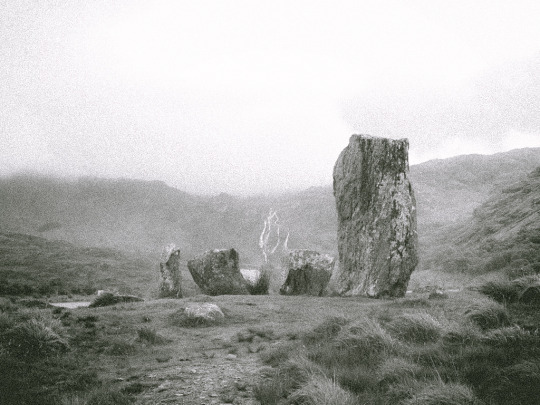
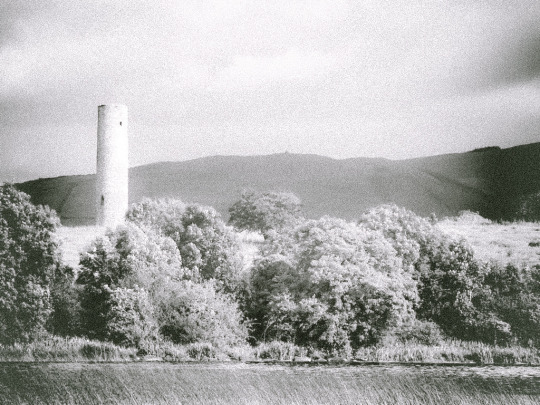
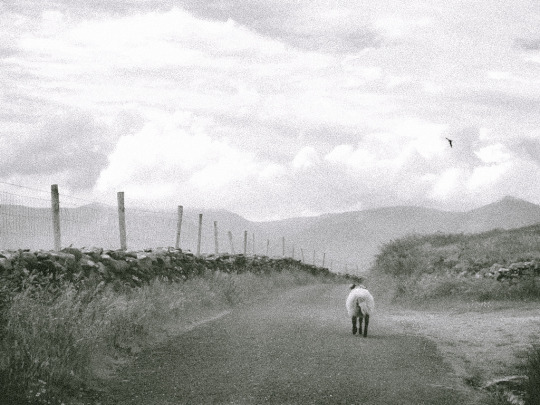

the ring of kerry // co. kerry, ireland // july 2012 // ©
#ireland#my photos#ring of kerry#photographers on tumblr#travel#europe#photography#original photographers#photooftheday#film#county kerry#dingle#emerald isle#black and white#i actually can't recall where that tower is in ireland (i feel like it's not in kerry but idk it fits the vibe here)
111 notes
·
View notes
Text



Copenhagen- spent my birthday here and went to Tivoli Gardens - one of my FAVOURITE places 🎢🎢🍾
#blond girl#girl nextdoor#girlblogging#girlnextdoor#photographers on tumblr#sfw little blog#cute#girls who game#cute blond#gamers of tumblr#travel#travelling#copenhagen#denmark#tivoli#europe#european#holiday#summer#tennis dress#mini dress#girls in dresses#blondie#theme park#rollercoaster#photooftheday#photoblog#tumblr girls#pretty girls#fit girls
16 notes
·
View notes
Text
Garbage - Push It 1998
"Push It" is a song by Scottish and American rockband Garbage, released as the lead single from their second studio album, Version 2.0 (1998). Lead singer Shirley Manson elaborated on the song's dreamy verse structure versus the confrontational chorus: "[It's about] the schizophrenia that exists when you try to reconcile your desires and demons with the need to fit in. It's a song of reassurance". The track contains a musical quotation of the Beach Boys' 1964 song "Don't Worry Baby". In 2007, "Push It" was remixed for Garbage's greatest hits album Absolute Garbage; some elements were made more noticeable, while some elements were reduced or edited out.
"Push It" debuted at number 9 on the UK Singles Chart, becoming the band's third top-10 single. It peaked at number 2 in Iceland, number 5 in Spain, number 14 in Finland, and number 15 in New Zealand. It reached number 38 on the European Hot 100 Singles chart, number 6 on the European Radio Top 50 chart, and number 5 on the US Modern Rock Tracks chart. In 1999, the song was featured in the intro video of EA Sports' PlayStation/PC ice hockey video game NHL 2000. In 2007, Chris Sheldon remixed a rock version of "Push It" which was playlisted by XFM prior to the release of Absolute Garbage.
The music video, directed by Italian photographer Andrea Giacobbe, was nominated for eight MTV Video Music Awards. It was also up for one MTV Europe Music Award for Best Video. A year later, Garbage were the leading nominee for the MVPA Music Video Awards industry event, with six nominations shared between the videos for "Push It" and "Special". Gina Monaci and Jeff Judd won the award for Best Make-Up in a Music Video for their work on "Push It".
"Push It" received a total of 74,2% yes votes! Previous Garbage polls: #356 "I Think I'm Paranoid".
youtube
461 notes
·
View notes
Text


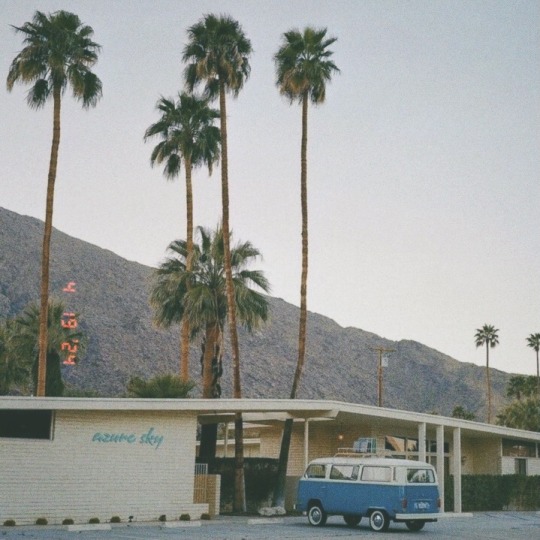
Heaven is a place on earth with you, tell me all the things you wanna do. ₊˚⊹ ᰔ
honeymoon getaway with husband! nct dream.
‧˚ʚ ───────── ₊‧꒰ა ୨ৎ ໒꒱ ‧₊ ───────── ɞ˚‧
AN: someone requested this one. GASP, THANK U. Mentions of sex lol because what's a honeymoon without sex. (Implied that you two already did it, but the first night meant having sex as a married couple, why am I explaining this jksdfkjsdk)
Mark Lee
Mark would probably take you somewhere in America. Probably LA or Miami, somewhere in the coastal area. Just you two enjoying the beach and spending the day at the carnival or fair land. You two are young lovers enjoying the night life in America! It'll be full of alcohol, giggles, and just spontaneous foodtrip! You two will book an airbnb with the cutest and coziest interior design. Also the first night would probably be more intimate and you two are nervous but at the same time, clumsy because you two wouldn't stop laughing ?? as if you two didn't fucked before lol.
Huang Renjun
Since your wedding with Renjun is during the summer or spring season, he would definitely take you to Japan for the honeymoon. It'll be during the cherry blossom season! It's cute and something about seeing the first bloom makes it exciting for both of you. You two will book a nice expensive hotel room and just spent the duration of the honeymoon sightseeing and of course, taking pictures around cherry blossoms trees. The first night with him is just like the first time you two had sex, but this time, you two are now married and much experienced. So it's much more special!
Lee Jeno
Jeno would take you to Japan too because he knows how much you love the culture there. He'll book a nice traditional house, (for the vibe he said.) and just take you to places like Tokyo Disneyland and Ghibli museum because you're a child at heart! He'll enjoy it too of course! You two also did A LOT of shopping. Also his looks are so exquisite, very tourist husband vibes with the shades and camera. OKAY so the first night with him is VERY much intimate, like you two just sitting in front of each other before you tell him to please take care of you. And he'll just smiles and say the same thing.
Lee Donghyuck
I like to think that you and Haechan probably fucked after your wedding, and that's because you two were so drunk after the reception LOL. But despite having a beach wedding, Haechan will still have a beach destination for your honeymoon. Bali, Palawan maybe. Anyways, you two will book a room in an expensive resort that's overlooking the beach. It's just a honeymoon full of beach activities, playfulness, and just you two being lovey-dovey!! Will kiss you under the sun set at some point. Also the first night will be much more romantic compared when you two were drunk.
Na Jaemin
Jaemin would probably take you to Europe for your honeymoon. Somewhere in Amsterdam or Paris because he's a romantic. Definitely a city tour especially during night where the city's much alive, filled with people and just bustling with noise??? yeah, you two would be holding hands giggling as you two venture out the city. Will also be that photographer husband who takes cute photos of your cute fits. He'll book an expensive hotel room for you two and for the first night, he was very very careful of you, like he was such a gentleman because he wants to show how much he loves you.
Zhong Chenle
Chenle would think that it's fun for you two to stay within each other's comfort place, so he'll probably take you to Shanghai or maybe Singapore city. It'll be city tour too! Since he's very confident with talking with locals, you two will have underrated food trips and just take you to interesting places that he found while canvassing the area. He's the type to hold your hands because you tend to get lost in the crowd. You chose the accommodation, so you found a cute airbnb that suited each other's taste. The first night with him is full of playfulness! Chenle would constantly tease you but it was still lovely nevertheless.
Park Jisung
Jisung would also bring you to Europe because he thinks that the 'honeymoon' vibe is just there. Probably in Rome or Barcelona. You two would book a nice hotel that overlooks the entire city, it was breathtaking when you two entered the room. You two would go sightseeing, try local foods, and just take pictures of each other. Jisung has his arms around your shoulder when you two are walking, and both your outfits coordinate! Also he likes to steal kisses from you. The first night would be romantic Like Jisung prepared EVERYTHING and you just lay there and be pretty for him.
#nct dream#nct imagines#nct dream fic#nct fic#nct#nct x reader#nct dream imagine#nct scenarios#nct fluff#nct dream reactions#nct drabbles#nct dream imagines#nct mark#nct jeno#nct renjun#nct haechan#nct jaemin#nct chenle#nct jisung
462 notes
·
View notes
Text
Witness | CL16
Summary: In the shadowy world of Monaco's elite, the Leclerc family reigns supreme. Charles Leclerc, the charming middle son, maintains their pristine public image—until one rainy night, during a fit of rage, Charles does the unthinkable. A young woman witnesses his actions, and her terrified eyes haunt him. Consumed by guilt and fear of exposure, Charles embarks on a desperate search to find her before she can destroy his family’s legacy. As he delves deeper into Monaco's underbelly, Charles must confront his own darkness and the lengths he will go to protect his family.
Pairing: Charles Leclerc x OC (name to be revealed)
Warnings: Violence, blood, angst
Masterlist

Chapter 2
It was never her intention to stay in Monaco for as long as she did. The decision was made on a whim, a spontaneous deviation from their original plan. She and her best friend, Diana, had pooled all their savings to backpack through Europe, a final adventure before heading off to university the following year. They had dreams of exploring ancient cities, savoring exotic cuisines, and collecting stories to last a lifetime.
Except, they never made it out of Monaco. Halfway through their adventure, they ran out of money. The glitz and glamour of the principality had drained their funds faster than they anticipated. In a desperate bid to keep their dream alive, they decided to find work in Monaco until they had enough money to continue their journey or return home.
But they stayed. For her best friend, the decision was driven by an insatiable hunger for adventure and the thrill of the unknown. Monaco, with its opulent casinos, stunning coastline, and vibrant nightlife, was an irresistible playground. Every day brought new experiences, new faces, and the promise of excitement just around the corner.
For her, staying was about something deeper, something more poignant. She was trying to find a place to call home after the devastating loss of her parents. The memories of her past were wrapped in sorrow, her hometown a landscape of grief she wasn’t ready to face. If she had to return, it would be to a cold, empty apartment filled with silent reminders of a life she once cherished. The photographs on the walls, the worn furniture, the lingering scent of her parents’ presence—all of it was too much to bear.
Selling the apartment didn’t feel right either. It was her last tangible connection to her family, a physical space where she could still feel their presence. Despite her financial struggles, she couldn’t bring herself to part with it. It was her sanctuary, her link to a past that, while painful, was also filled with love and warmth. The idea of someone else living there, of it becoming just another property on the market, was unthinkable.
So she chose to stay in Monaco, finding solace in its cobblestone streets and the endless blue of the Mediterranean. She worked various jobs, from waiting tables to cleaning hotel rooms, anything that would allow her to survive and maybe, just maybe, thrive. Monaco became a place of healing, a backdrop to her search for a new beginning. It offered a sense of anonymity and escape, a way to redefine herself away from the shadows of her past.
Every day was a balancing act between the need to move forward and the pull of her memories. She built a new life in the bustling, vibrant city, finding moments of joy amidst the challenges. Monaco's beauty and chaos gave her the distraction she needed, and the transient nature of the city’s inhabitants meant she could reinvent herself as often as she needed to.
As they gained experience and confidence, their opportunities expanded. Waitressing in the casino was the next step—a more upscale, lucrative option that introduced them to a different side of Monaco's glittering facade. The casino, with its opulent decor and high-stakes atmosphere, was a realm of its own. She found herself fascinated by the people who frequented it: the wealthy, the desperate, the lucky, and the reckless. Each night brought new stories, new interactions, and a deeper understanding of the world she had plunged into.
Now, she manages the blackjack tables at one of the more popular casinos in the city. It's a position of responsibility and respect, one that she has earned through hard work and dedication. Her calm demeanour and sharp mind make her a natural at handling the complexities of the job. She ensured the games ran smoothly, the customers were satisfied, and the house always had the upper hand. It was a far cry from the uncertain young woman who arrived in Monaco, and she took pride in the journey she had made.
Diana's lust for adventure meant she took a different path. Drawn by the allure of the open sea and the promise of new experiences, she ended up working as a stewardess on one of the locals' yachts. It was a job that took her beyond Monaco's borders, allowing her to travel to Italy, France, and Spain. Each trip was a new chapter, filled with sun-soaked days, glamorous parties, and the thrill of the unknown. She revelled in the freedom and excitement, her heart set on exploring as much of the world as she could.
Their paths diverged, but their bond remained strong. They shared stories of their adventures and challenges, finding comfort in each other’s experiences. She would listen to tales of Mediterranean coastlines and opulent yachts, while Diana would hear about the intrigues and dramas unfolding at the blackjack tables. They were both carving out their own versions of success, driven by different motivations but united by their shared past and the dreams that brought them to Monaco.
In the midst of their bustling lives, she couldn’t shake the feeling that Monaco had become more than just a stop on their journey. It had become a place where she could redefine herself, a place where she could heal.
For her, the days following the incident were a nightmare. She tried to stay indoors as much as she could, avoiding the outside world and the risk of bumping into the murderer. The image of Charles, his hands covered in blood and his eyes wild with panic, was seared into her mind. She didn’t know if he would harm her too and if she was in danger simply because she had witnessed his crime.
She was violently ill, throwing up every day as the memory crossed her mind. The nausea wasn’t just physical; it was a visceral reaction to the terror and helplessness she felt that night. Her once safe and vibrant life in Monaco now felt like a trap, with shadows lurking around every corner. The fear was suffocating, pressing down on her with every heartbeat.
When she finally returned to work, she took a different route, meticulously planning her path to avoid that alley. The thought of walking past the place where she saw the life drain from a man's eyes was unbearable. She couldn’t face it, couldn’t let the reminder of that night haunt her more than it already did. The new route was longer, more cumbersome, but it provided a small measure of psychological relief.
Her colleagues at the casino noticed the change in her demeanour. She was quieter, more withdrawn, her usual spark dimmed by the weight of her secret. Managing the blackjack tables required her to maintain a calm and composed exterior, but inside, she was constantly on edge. Every new customer, every unexpected movement, set her nerves alight with anxiety.
Despite her efforts to avoid the memory, it lingered. The dark alley, the rain-soaked streets, the brutal fight—they were always there, lurking just beneath the surface of her consciousness. She found herself jumpy, easily startled, her senses heightened by a perpetual state of fear. The once vibrant city had become a maze of potential threats, each day a challenge to her sanity.
Diana, busy with her own adventures on the yachts, noticed something was wrong but couldn’t quite understand the depth of her trauma. She tried to be supportive, offering distractions and comforting words, but the horror of that night was something words couldn’t soothe. She couldn’t share the full truth, couldn’t burden her friend with the gruesome reality of what she had witnessed.
She was trapped in a silent nightmare, each day a struggle to maintain a semblance of normalcy while the weight of her secret threatened to crush her. And in the midst of this, Charles was searching for her, driven by his own fears and need for redemption. Their paths, once accidentally crossed, were now inexorably linked, setting the stage for a confrontation that would force them both to face the darkness within and around them.
She contemplated reporting the incident, but fear held her back. She knew he had seen her face, and had gotten a good enough look to identify her. The uncertainty of who he was or what he was capable of paralyzed her. The thought of police protection felt like a distant hope. She was a foreigner, a transient figure in Monaco, and doubted the Monegasque police would prioritise her safety over the influence and power someone like him might wield.
The universe seemed to be playing a sick game of cat and mouse with her and Charles, with each of them constantly missing the other by just a few minutes or a turn of a corner. Their paths continued to intertwine in frustratingly close calls—Charles arriving at a café just as she left, her taking a different route home just minutes before he passed by. The tension built with each near encounter, the stakes rising as both their lives remained suspended in this cruel game.
She tried to maintain a semblance of normalcy, but every creak of her apartment, every unexpected knock, sent her heart racing. She kept the lights off, the curtains drawn, as if hiding from the world would somehow keep her safe. She longed for her friend’s carefree spirit, for the days when her biggest worry was earning enough to continue their adventure. Now, every moment was tinged with the fear of being found.
As the days passed, she realised she couldn’t keep living in fear. The incident had fractured her sense of security, but she was determined not to let it break her completely. She started to devise a plan, thinking of ways to leave Monaco, to start over once again. But the thought of running, of abandoning the life she had built, filled her with a deep sense of loss.
Unbeknownst to her, Charles was closing in. His determination to find her, to make things right, was relentless. He scoured the city, desperate for any clue that would lead him to her. The closer he got, the more his anxiety grew, knowing that confronting her would mean facing his own demons and the possible unravelling of his family’s carefully constructed empire.
In the heart of Monaco, their fates were on a collision course, bound by a night of violence and a web of secrets. The question remained: when they finally met, would it bring redemption or ruin for both of them?
-------------------------------------------
Taglist: @annie115 @snzleclerc
#charles x reader#f1 fanfic#f1 fic#f1 imagine#formula 1#charles leclerc fanfic#charles leclerc#charles leclerc x reader#charles leclerc x you#f1 x reader#formula one x reader#leclerc#ferrari f1#charles leclerc 16#forza ferrari#charles leclerc imagine#charles leclerc fluff#scuderia ferrari#charles leclerc fic#charles leclerc smut#monaco grand prix#monaco gp 2024#monaco24#monaco 2024#mafia!charles leclerc#mafia!f1#mafia!au
152 notes
·
View notes
Text
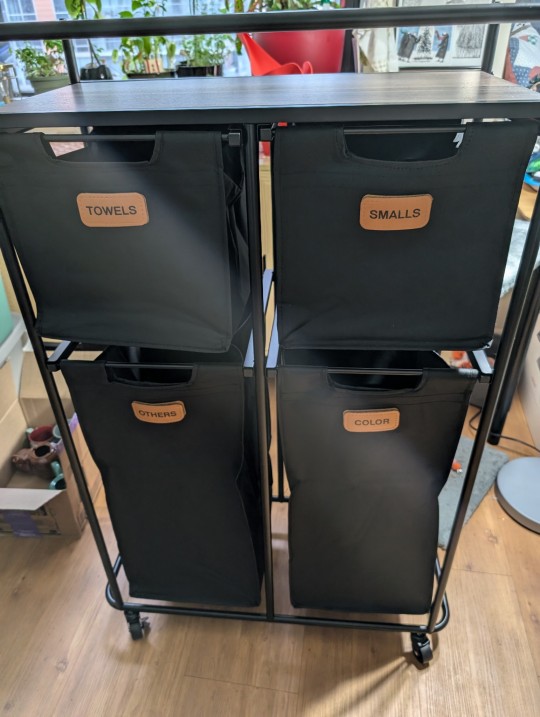
Happy Monday! I built a laundry cart. I'm installing new shelving in my hall closet where my current laundry cart lives, and it's not going to fit into the shelving in the way I desire; I found this narrower one on a stupidly good sale (something like 70% off) so picked it up for a song and put it together this morning. My building has an internal messageboard and I had great luck selling a mattress there so I'll list my old cart up there later today.
I did have to pull it apart and put it back together, but only once (I installed the rails backwards, which being fair to me they don't give much direction on in the instructions). Number of bleeding injuries: confined to one!
I listened to the latest episode of Across The Romaverse, an English-language podcast about Italian football team AS Roma. My poor ragazzi, they've had four coaches in less than twelve months; the latest, a "caretaker" coach who's worked for Roma before, has come out of retirement and is the oldest coach in Europe, in his seventies. I wanted to hear what the general sentiment about him was from people who pay more attention than I do, and it seems generally positive as long as they can get someone decent to take over next year. The lads won't be lifting any trophies this year but Roma fans are there for the passion and the drama, not the accolades.
[ID: A photograph of a black laundry cart with four "drawers"; two small drawers labeled "Towels" and "Smalls" and two taller drawers labeled "Others" and "Color". It's way taller than I expected, but it looks very nice and fashoinable.]
89 notes
·
View notes
Text
You Hang the Stars in the Sky

Pairing: Reneé Rapp x Reader
Warnings: none, just fluff
Word Count: 1400
Reader replaces Towa Bird at the Oscars after party as Reneé's guest. Established relationship.
Just a short little thing I wrote while depressed post-Oscars because I like hurting my own feelings.
The only thing that was keeping you grounded in this moment was her pinkie finger twined tightly with yours. You stood side by side with your girlfriend as you waited in line to have your photos taken at the Vanity Fair red carpet for the Oscars after party.
Reneé, of course, looked stunning as always. She was in a gorgeous white dress with an intoxicating plunging neckline, black heels and her trademark simple, yet elegant, smokey makeup. She had hair extensions that went down to her mid-back and you had been absentmindedly playing with her hair all night, whenever you could.
You felt fine with how you were styled. You were in a flattering suit that complimented Reneé’s fit well, your hair done just so, light makeup to just conceal and brighten… but this whole experience was so far beyond anything that Nae and her team could have prepared you for.
All around you were blinding lights and flashing cameras, people yelling, celebs everywhere you looked. Even Reneé was feeling the anxiety and she was much more familiar with how to navigate these events than you were.
You knew that your life was going to flip upside down when you started dating, you weren’t foolish in that regard. Being with Reneé for the duration of her Europe tour the past month meant that people had been looking your way and starting to talk, but you felt assured by the fact that Reneé wasn’t pressed about making a big deal out of going public. She just wanted you two to live your lives together and she didn’t want you to worry about things that were outside of your control.
Europe was a whirlwind. What was once just a lifelong friendship between you and Reneé suddenly exploded into more shortly before she was getting ready to leave for tour. Her asking you to travel with her was a spur of the moment decision, but one that neither of you regretted in the slightest.
She had said that you were her saving grace during it. You took care of her when she was sick, made sure she was resting enough, encouraged her to say something about the less than ideal signs that had started showing up at the shows, and just generally loved her and looked out for her. You had said, “I’m just doing what anyone would do for you.” But she insisted that, “no, they wouldn’t.” There were depths to that statement that hit hard for you both, and you realized that she was just as deeply into this relationship as you were.
Now that you were back in the states and things between you had only gotten more serious, your famous girlfriend had warned you that the attention on you might get crazy really fast, and she was right.
You weren’t famous. You weren’t even famous-adjacent. You were just Reneé’s person. And now, you were standing on a red carpet with her and doing everything in your power to not completely dissociate.
You stood at her side and warped your arm around the small of her back as she gently settled her fingertips into the hair at the back of your neck, moving them in soothing circles, letting your hair twirl around her fingers to calm and ground you. You echoed the motion with your hand on her back, falling into old habits of wordlessly comforting each other through moments of anxiety.
You tried not to look dead in your face. You tried to look light and joyful and grateful. But every camera flash stung your eyes and every single photographer was screaming at your girlfriend in a way that made your blood boil.
You could hardly tolerate the way that these people speak to Reneé. And frankly, Reneé was much more prone to flying off the handle than you were so you couldn’t really fathom how she could get through things like this.
You glanced over at the blonde and quickly got an inkling for how she managed. She was dissociating, as best as she could anyway. She had learned to master the facial expression that wasn’t really a smile but still looked pretty. She kept her eyes loosely focused and her mouth relaxed. She ignored the shouting photographers and just took things at her own pace, posing the way that she wanted to, not really giving thought to whether the photographers got the shots that they wanted.
In that moment, you made the conscious decision to switch tactics. You gave up looking out at the cameras and just started to look at her. Everything got easier, then. Everything was easy when your focus was Reneé. You just looked at her gorgeous blue eyes and the highlight on her cheekbones and the softness of her lips and the slope of her shoulders and everything was all right. Your genuine smile formed on your face and when Reneé caught your gaze on her, she couldn’t help but smile genuinely, too, laughing sweetly at your expression and taking a second to nuzzle her face against yours as if no one else was there.
She guided you through the rest of the whole ordeal which you desperately needed. When you finally exited the red carpet area, you both took deep breaths and squeezed each others’ hands. You kept a hold of her hand and guided her down some steps, being careful to watch her footing so that the combination of her heels and floor-length dress wouldn’t trip her.
She sighed at the bottom of the staircase and finally spoke to you, now that it was just the two of you and her agent, “well, that will be a hard-launch if I’ve ever seen one.”
You raise an eyebrow, “what do you mean?”
She giggled, “at the end there, you were looking at me like I hang the stars in the sky. I don’t think anyone will be doubting our relationship anymore.”
You smile and nod your head, “ah…” suddenly, you felt panicked, “wait, is that okay? I didn’t-”
Reneé cut you off, “baby, of course it’s okay. Don’t worry,” she squeezed your hand, “I want everyone to know that you’re mine, and I’m yours…”
You nod again, feeling the anxiety ease a little, “okay… are you sure?”
Reneé stopped walking and turned her body to face you directly, pulling you forward by your hands so that you were close to one another, “I’m sure, c’mere.”
She reached out and placed a hand on the side of your neck. Shivers raced down your spine from the touch of her fingers and the cool metal of her rings. She pulled you in and kissed your lips gently, lovingly. You melted into her like always, your hands instinctively finding their home at her hips and lightly tugging her even closer to you. She smiled in the midst of the kiss and caressed her thumb over your skin, and rubbed her other hand along your upper arm.
She was everything. At the end of the day, she was all that mattered. You would brave any storm for her, and you’d never want anything about her career to change for your sake, but you were very lucky that Reneé valued your personal lives and your security as a couple a lot. You knew that she wouldn’t jeopardize what you had together, and you promised her that she would never have to choose between you and her work.
When the kiss you shared came to an end, you met each other's eyes and smiled adoringly at one another.
“I love you, Nae,” you state, “thank you.”
“I love you too. Thank you for being here with me.”
You nod and lift her hand to your lips, placing gentle kisses on the back of her hand and her knuckles. She smiled and fixed some of your hair, inducing a flood of butterflies in your stomach. She could always do that to you, without even trying. And when she was trying, forget it.
You met her eyes and said, “for the record, you do hang the stars in the sky.”
The blonde rolled her eyes at your cheesy line and then pecked a kiss onto your cheek, “you sap,” she joked, “now come on, let’s go party and enjoy ourselves, yeah? You up for it, baby?”
You crack a smile and nod, “of course, angel.”
171 notes
·
View notes
Text

Here's a photo of me (Marti) playing with a photographer as he adjusts my top a little lower to reveal the upper edges of my areolas. This is one of my "Please Me" tops that I loved earlier in my career; I had several of them. The tight fit in the boobs (of course, everything is tight fitting in the boobs with me) and the very sheer fabric made me feel extra sexy.
But about the photographer. . .
I was thrilled when I learned he wanted to photograph me; this would have been around 2015 when my career as an adult model and porn star were just taking off. The guy, from Europe, was well known as an boudoir and erotic photographer and that specifically wanted to photograph me (for a client of his) was a real honor for me. We did the initial session in the house I shared with my then husband Daniel. I later heard that his client was thrilled with the photos and he scheduled a second session again at my house for 6 months later. And so it went for three years, every 6 months. He was always a gentleman and our photo sessions, while fun and sexy, were also very professional; that is, nothing happened between us sexually.
The every 6 month session continued for a few more years even though discovered through the grapevine that his client was only paying for one session after those initial 3 years: he was doing one session just for himself! I let it go for awhile but finally asked him about it. He confessed with a smile on his face that he enjoyed our working together too much for just once a year, and, besides, he thought my photos were the hottest he had ever made! And who was I to deny him.
The photo above was the last session we had at the house at Daniel's even though Daniel and I had been divorced for a couple years at that point. As you can see, I was almost done with my freckle removal sessions and was still a couple years away from my face lift.
The last he retired from his day-to-day photography business but still did a few jobs on the side - including me. But his "no sex with models" oath went down the drain after her retired.
It was wonderful to finally let him have what he had spent years photographing. We're still friends and very occasional lovers. . . (Q cup, 10/2021)
41 notes
·
View notes
Text
”Night does not show things, it suggests them. It disturbs and surprises us with its strangeness.” – Brassai
I am so convinced that Louis' photos in Paris in the new episode are inspired by Brassai's 'Paris De Nuit' photobook, those photo snapshots from the motorbike ride fit right in with the dark gothic vibe of Brassai's work and seeing as he mostly photographed the interwar period for that book it's totally viable Louis would have seen it.
The Theatre just epitomises the freedom and hedonism of post war Europe which Brassai captured in his photos aditionally, the 30s and 40s are such an underrepresented era of fashion and aesthetic in modern cinema (at least when it's done well) and I'm so ecstatic that IWTV is doing it such justice.
Either way I'm convinced the production used Brassai as inspiration, I mean look Louis' photos blend right in.
Also sidenote: Claudia's dress she got from Madeline this ep is actually to die for I'm so close to throwing out all my project plans to make it
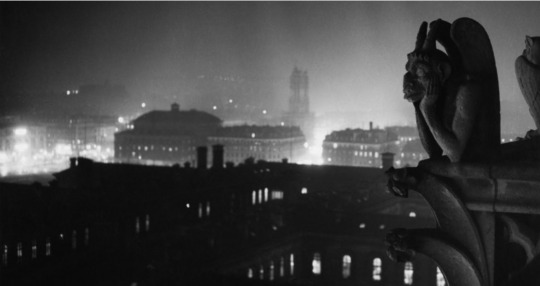
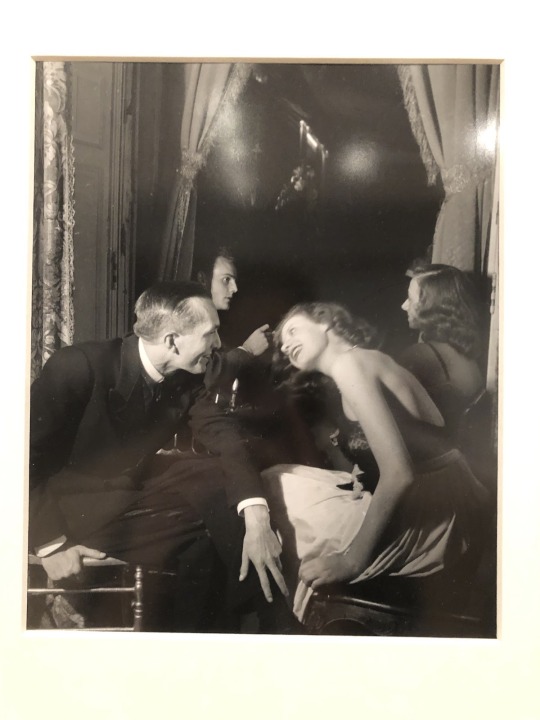
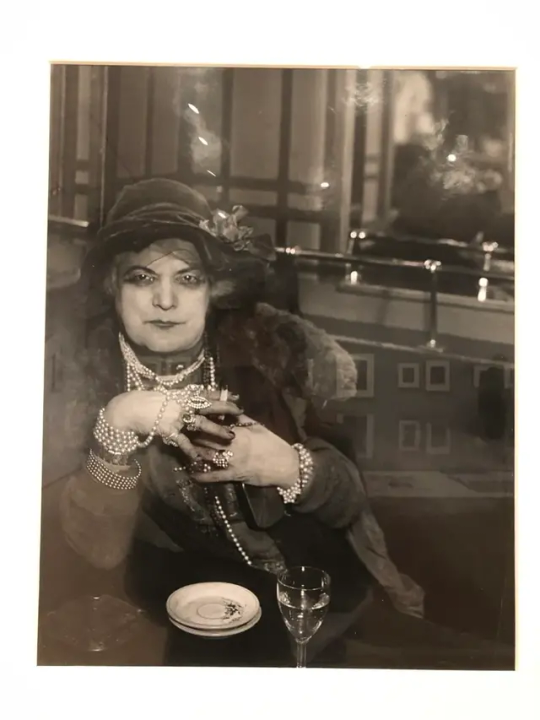
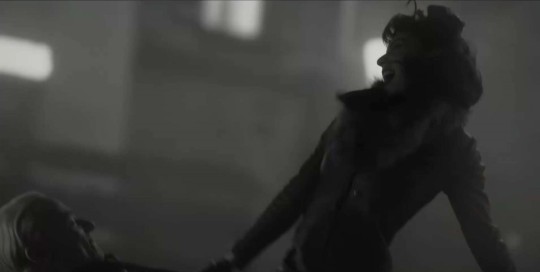
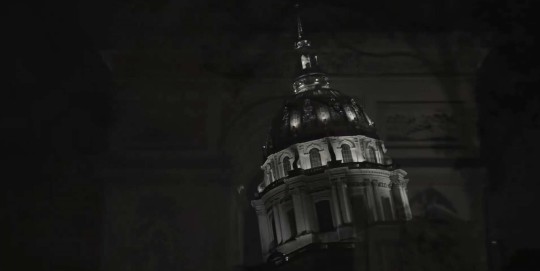
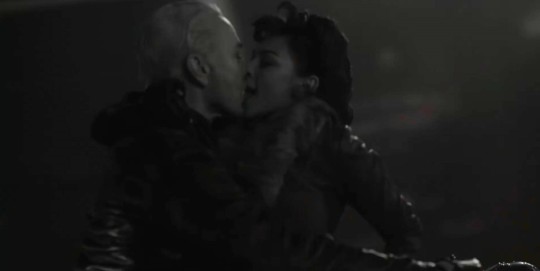
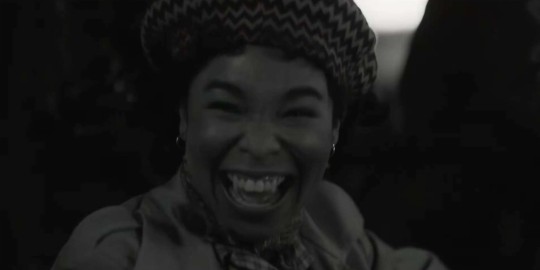
#iwtv s2#amc iwtv#interview with the vampire#iwtv spoilers#claudia de pointe du lac#louis de pointe du lac#lestat de lioncourt#armand#theatre des vampires#santiago#brassai#photography#historical fashion#vintage fashion#vintage photography#1930s#1940s
132 notes
·
View notes
Note
would you pleaaaase drop the lore for those re ocs. looks at you with big pleading eyes
YIPPEE! Thank you for asking about my RE OCs 🥺 As with all of my fandom OCs, I am playing with canon like clay (There's a lot of head canons + making things up as I go) so please view this as an AU :)

Here’s Handler Dayus (he/him) and NE-a H-01 (it/its). They commit atrocities together on behalf of Umbrella :) I've made a tag for these two: Photo of a Stranger AU || RE OCs
Just a heads up, it’s not a happy story. Long post below!
NE-a H-01 [Nemesis Alpha Parasite, Human-Host Second Unit], code name Deerstalker(<- Might change that). Competent in any stealth based missions and capable of being adaptive on the field. It cannot vocalise (not completely true 😉) but it knows three sign-languages (American, French, British). It’s technically not a Tyrant because it’s not infected with the T-virus.
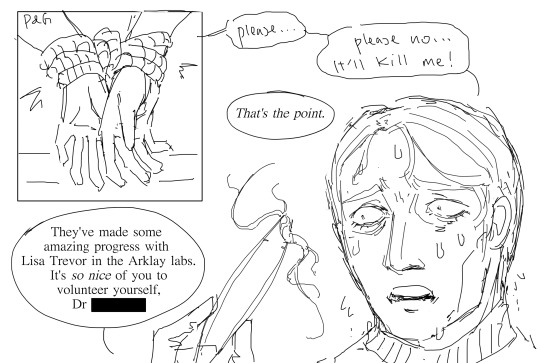
NE-a H-01 used to be a human, who was a scientist at Europe Lab 6 (aka, the Nemesis Project, Luis Serra etc). Deerstalker was not a project approved by Dr Herman Frankl, but instead, was a put together to cover up a Lab 6 scientist's misuse of the NE-a parasite as an extreme case of professional-turned-personal rivalry. H-01 survived, so they put it to use. The scientist who caused this incident, along with the Deerstalker project, have been removed from EL6 and transferred to the American Labs.
Dayus had a background in biochemical engineering. But unfortunate circumstances in life eventually had him joining the UBCS instead. Excellent performance and an outwardly remorseless personality saw him handpicked to work as a Tyrant field handler, where he was assigned NE-a H-01 as a BOW to work with.
He did not know about the details of its creation, thinking it was just another lab grown BOW. That was until he was given a photograph, and everything spiralled from there <- I might make a comic for this. The photograph in question.
So Yay! Both of these poor meow meows are constantly going through The Horror. Lore is subjected to change, I’m always adjusting stuff. And there’s a lot of complicated emotional nuances + detailed lore that I can’t fit in this post, but hopefully I will sprinkle it into any doodles I make of these two.
(Tbh... I made these OCs cause I wanna make my own human x Tyrant ship so yeah 😳 👉👈)
Thank you for reading this long post! Have a nice day :)
#Photo of a Stranger AU || RE OCs#resident evil#resident evil oc#resident evil original character#tw body horror#png answers
23 notes
·
View notes
Text

THURSDAY HERO: Rabbi Herschel Schacter
Rabbi Herschel Schacter was a young U.S. Army chaplain who helped traumatized Holocaust survivors rebuild their lives, and later became an influential leader in the Orthodox movement and a strong advocate for Soviet Jewry.
Herschel Schacter was born in Brooklyn in 1917, the son of immigrants from Poland and the youngest of ten siblings. His family was religious, and he was educated at the finest yeshivas before obtaining smicha (rabbinic ordination) in 1941. Rabbi Schacter served as a pulpit rabbi for a year before enlisting in the Army after Pearl Harbor. After attending Army Chaplain school at Harvard, he was sent to Europe with the VIII Corps and fought in the Battle of the Bulge.
Rabbi Schacter was one of the liberators of the Buchenwald concentration camp. He stayed in Germany for two and a half months after the war, tending to the broken spirits of survivors, most of whom had lost their entire families. Many were the only survivor from their entire town; everyone they ever knew had been murdered. A famous photograph shows him leading Shavuot services at Buchenwald (above). This photo occupies an entire wall at Israeli Holocaust Memorial Yad Vashem.
What Rabbi Schacter saw at Buchenwald was hell on earth. The inmates who were still alive – barely -were emaciated, lying on filthy planks and covered in lice, hollow-eyed ghosts blinking in the sunlight and without the energy to even lift their heads. The stench of rotting flesh and feces was overwhelming.
Rabbi Schacter noticed Yisrael Meir Lau, 7 years old, hiding behind a pile of corpses. Known as Lulek, the child had lost most of his family and had been on his own since age 5. Rabbi Schacter cared for the boy and helped him immigrate to Israel, where he would one day become Chief Rabbi.
Rabbi Schacter’s son Jacob, a prominent Orthodox rabbi and professor at Yeshiva University, wrote in a piece for Tablet Magazine, “My father spent the rest of his life describing what he saw in Buchenwald and what he did during his 10 weeks there. His work focused on a number of different areas: he tended to the psychological needs of survivors; he worked hard to reunite families; he founded a kibbutz outside Weimar for young survivors preparing to make aliyah [move to Israel]; and he organized a transport of children to Switzerland.”
Another story that illustrates Rabbi Schacter’s massive impact concerns Yoav Kimmelman, a 16 year old from a Hasidic home who lost every single member of his large extended family, around 60 people. The Holocaust destroyed Yoav’s faith and identity as a Jew. According to Rabbi Jacob Schacter, Yoav was “done with God, done with Jewish life, done with Jewish destiny, done with the Jewish people.” Rabbi Herschel Schacter reached out – literally – and singlehandedly brought Yoav back to Jewish life. It happened when Rabbi Schacter was taking 200 child survivors to Switzerland. He wanted young Yoav to go with him, but the boy had no interest in being around fellow Jews and he refused to go. Rabbi Schacter asked him to come to the train station to say goodbye and while there, the rabbi reached down and physically dragged Yoav onto the train. The teen was angry and sullen, but the rabbi convinced him to join a minyan and read Torah in the DP camp. Long story short, Yoav Kimmelman remained religious and at his death, he left 80 descendants, all of them Torah Jews. “That’s all because my father had the guts to pull him onto that train when it left the station,” said Rabbi Jacob Schacter.
Rabbi Herschel Schacter became a prominent leader of Orthodox Judaism in America, helping to rebuild from the ashes and grow the movement. He was elected president of the Conference of Presidents of Major Jewish Organizations in 1968. Dr. Rafael Medoff, in his book “The Rabbi of Buchenwald,” wrote: “He was the first Orthodox rabbi to reach that level of leadership. Until then others saw Orthodox leaders as fit to be heads of Orthodox groups, but not larger ones. Rabbi Schacter broke that mold. He was sufficiently savvy and sophisticated to represent the entire [Jewish] community, not just the Orthodox minority.”
At the very beginning of the movement to free Soviet Jewry, in 1956, Rabbi Schacter was part of the first rabbinical delegation to visit the USSR since 1917. He then went to Hungary to help Jewish refugees flee during the Hungarian revolution.
Rabbi Schacter served as a pulpit rabbi in the Bronx for more than 60 years and was known as a brilliant and inspiring orator, beloved by his congregation. He passed away in 2013 at age 95 and was survived by his beloved wife Pnina, two children, four grandchildren, and eight great-grandchildren. Pnina Schacter died in 2018.
For healing the broken spirits of Holocaust survivors and helping them rebuild their lives, and for his devotion to the Jewish people and his decades of leadership, we honor Rabbi Herschel Schacter as this week’s Thursday Hero.
61 notes
·
View notes
Text
Opinions needed!
I’m on a train of thought and I need fellow passengers
Context: I’m a Belgian archaeologist, art historian and currently studying heritage. Many of my classes include museology and de-colonising museums which is relevant due to the colonisation of Rwanda, Burundi and especially Congo. Also case studies about the Benin Bronzes and the Elgin marbles.
I had to read an article about the restitution of stolen art which talked about the Benin Bronzes and the Elgin marbles. In that same timeframe, I watched a video about the last craftsmen skilled in making Benin Bronzes by Business Insider.
The craftsman in the video mentions how he applauds the Nigerian government for its efforts in trying to get the historic bronzes back to Nigeria, but what struck me the most was his plea for the same amount of attention for modern craftsmen because the craft today is disappearing.
It reminded me of the second time I visited Rwanda and went to the Ethnographic Museum in Butare (Institute of National Museums Rwanda), where there was one story about a Rwandan form of high jumping which is now lost to colonialism, and another instance was a display of Rwandan cultural artefacts AND a woman doing beadwork in the museum.
I started reflecting back to the museums I know in Belgium and to an extension the whole of Europe. We have two types of museums; the first is the art museum which is paint on canvas, the second is the (national) museum for cultural history. Optionally are archaeological museums.
It made me think (bear with me). Art museums (which include modern art in the same building) are very lovely. You always hear about it: new exhibition, new special piece required, once in a lifetime view of… “Old” and contemporary works are exhibited together. How subject A influenced subject B. Look at how style developed. Look at how subjects/clients/social constructs/… developed. Look at the beauty of Jan van Eyck and the Ghent altarpiece and now look at Bruegel and Rubens 100 years later.
Cultural history museums, as big as they are, are usually very … dead. You can visit once, see what there is to see and then not visit again in four years and everything is still very much the same. Although many museums have made an effort in saying “yes these things were required because of colonialism”, it’s usually limited to a plaque somewhere and maybe a photograph which in time was like “look how cool I am looting these things” with a description now saying “see how not cool it is to loot these things”. None of this includes excuses, restitution, exchange of art,… nothing.
Cultural history museums are sort of frozen in time. The - we don’t know what to do with ourselves- kind of exhibitions floating between “look at the cool stuff we have” and the unease of how they got them.
All the artefacts are sitting there as meaningless objects from a bygone era. As objects from a place that no longer exists, made by people that no longer exist for an audience that doesn’t exist. When I go to the Royal Museum for Central Africa near Brussels, I see many objects from predominantly Congo (DRC) with an audience that is barely worthy of being called African or coloured for that matter.
UNESCO is so adamant we preserve intangible heritage, the UN prioritises including third world countries in the equation and promote sustainable development. None of this helps in dealing with post-colonialism.
I don’t claim that any of what I’m writing below will be the solution, but I may dare to argue that some of these actions do fit within the UNESCO conventions we all massively agreed on.
Take for instance the craftsman making Benin Bronzes in modern day Nigeria. None of their work is in a museum. They have to sell their work on the roadside. Can you imagine buying a Warhol on the roadside? Protect local/traditional craftsmen with labels similar to the ones used exuberantly by World Heritage sites (f.e. Pyramids at Gizeh, UNESCO 1972’s “list”).
Cultural history museums should buy current art producing people’s work because art is not just limited to painted canvas, maybe marble statues. Art is everything. We can have old and new paintings together, but we refuse to bring old and new bronzes, marbles, baskets, instruments … together. Even going as far as excluding African modern art (which is fantastic) into western museums.
Make cultural history museums alive again. Let them show change in time too! The colonialist nation state no longer exists, why should we pretend that cultural history collections are made for colonising nations? Presenting looted artefacts like we are doing now almost feels like saying “we won over you”, we make African culture a thing from the past. Something that no longer exists, that’s why it is in a museum. It’s fictionalising different cultures, similar to people now being surprised that native Americans still exist.
We have painted artworks in museums almost immediately after they are made nowadays. Yet with “artefacts”, we insist on making them archaeological. “Old, no where to be found in practice today, no way of recovering the why’s and how’s.” They were dead and we are making them as reanimating, “saving” as much as we can.
African, Asian, South American and Native American cultures are not dead needing to be revived by a white formerly colonising museum institute.
Invite people over to display their craft, have guided tours by people from those places, let them tell the story, show what decolonisation looks like, show what reconnection looks like, support young talent... Have traditional Rwandan geometric painted art next to a contemporary Rwandan artist’s work. Have people come over to tell traditional and modern stories! Protect oral culture! Pay them the price their art is worth! If we can pay millions for Van Gogh, why not pay 100$ US for a contemporary Benin Bronze?
The west is so comfortable with having its painted artworks around the world, in hands of oligarchs, royal families, industrial magnates exchange them or have them on loan everywhere, yet with art we DIDN’T EVEN MAKE OURSELVES, we’re like “but it’s ours now. It’s here now.” The International Council Of Museums is sleeping on thousands of opportunities. Museum goers are no longer just the white, from-that-nation-derived audience. Countries are now multi-cultural, multi-colored, multi-curious. Accommodate those people. They want to see cool stuff too, they want to see old and new art from around the world too. Why not from their parent's places too?
So my basic question. Am I talking nonsense with this? Is this still a coloniser’s view? Are any of the points I made valuable? Opinions? Additions? Roast me even, this is important stuff. We need things to change. The current paradigm is broken.
#archaeology#history#art#belgium#archaeologist#colonialism#anti colonialism#decolonization#decolonialism#congo#rwanda#Burundi#benin bronzes#elgin marbles#nigeria#museum#art history#museology#museum history#cultural history#ethnography#folklore#british museum
21 notes
·
View notes
Text
TOM GLYNN-CARNEY photographed by Nick Tydeman for GQ magazine.







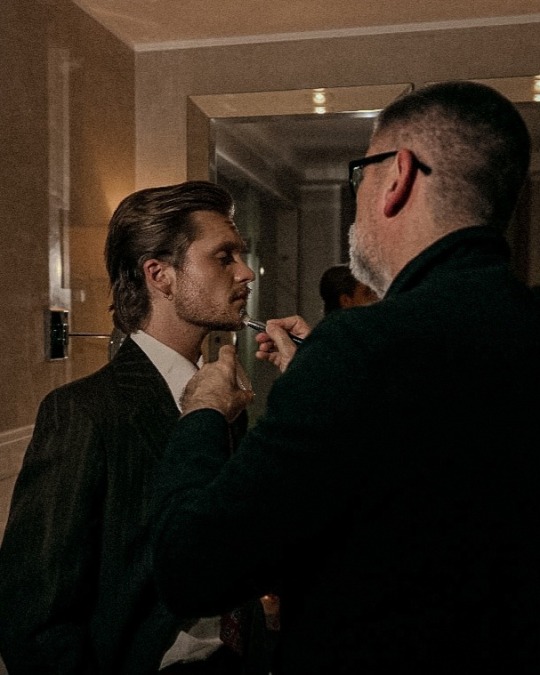


The interview for GQ.
— talking about clothing style and fashion:
"I like the clothes that I wear in my personal life so that’s why I try to incorporate them into [press looks].”
“They’re a bit of me. That’s how I like to go about doing press: just be authentic as best as I can.”
“Sustainability is a big thing in my life, it’s something I’m very passionate about.”
“The whole idea of single-use outfits just grinds my gears, it’s totally unnecessary.”
He and his stylist Tom O’Dell have spent the year browsing vintage markets and second-hand stores for unique pieces they can fuse together for a big look.
“It’s all preloved and it tells a story – not just from a sustainability point of view but it’s about its character and how things have aged.”
— talking about king aegon ii targaryen in 'house of the dragon' S2:
“You can take the character on a full arc and find lots of different colours to his palette, which is always interesting from an actor’s point of view."
"I feel like by the end of season two, I know Aegon so much more than I did at the end of season one.”
“I feel like on that set, it’s such an ensemble-led project and everybody has their own moment. There doesn’t feel like any hierarchy in that sense but, obviously, when I put the crown on my head, I’ve got to convince myself I’m more important.”
— the serious answer: Tom Glynn-Carney lives in the countryside now, his instagram bio reads ‘aspiring farmer’:
“If I’m out by the woodshed I’m gonna get caked in all sorts of crap so [I wear] stuff that I’m not too precious about.”
“I don’t think I own anything that’s new anymore, I’ve tried to weed that out, and any new purchase is always second-hand.”
It also helps that he has Joe Mills, his grooming guy, on-hand too.
— Tom Glynn-Carney’s fit for the 'House of Dragon' S2 London premiere, is something he’s already worn before:
“It’s a 1970s pinstripe suit. It’s brown with caramel pinstripe, high-waisted, slightly flared trousers.”
“I wore it for a stock photoshoot a few months back and I liked it so much I wanted to nail that on for one of the major looks for this tour.”
He found a dream stylist in the form of O’Dell, who specialises in second-hand clothing and has connections with vintage stores all over Europe:
“His studio is just a Mecca for all of that stuff.”
“I trust him wholeheartedly to be able to point me in the right direction.”
— About the influence that inspired Fabien Frankel on the red carpet:
“For the record, [Fabien] copied me, so write that down!”
#house of the dragon#hotd#hotd s2#tv shows#team green#vintage clothing#tom glynn carney#king aegon ii targaryen#aegon ii targaryen#actor#fabien frankel#ser criston cole#fashion#stylist#fashion style#hotd cast#gq magazine#photoshoot#bts#aspiring farmer#hotd s2 promo#hotd premiere#hotd s2 press#london#british gq#interview
59 notes
·
View notes
Note
if you had to guess purely on vibes, what order do you think the ttpd and anthology songs were written?
i know you said just based on vibes but i wanted all of my opinions to be researched and defensible so this has taken me hours to write. most of these are still opinions though!!
2022/Early 2023: i'm guessing she was mostly working with aaron on new stuff this year, while her and jack were building instrumental tracks and stems, so they could streamline writing while she was on tour if she wanted to. i'm also guessing she did 1989 tv early in 2022 and speak now tv that winter, but that's mostly based on vibes.
UNKNOWN: Clara Bow, Chloe or Sam or Sophia or Marcus (i could see this being recorded later in spring 2023, but it just sounds so 2022 to me), I Hate It Here, I Look in People's Windows (could easily be a post mh breakup song, but this is my list), Cassandra Dec 2022: Instrumentals for Fresh Out The Slammer, Florida!!!, and Guilty As Sin are recorded in New Orleans (FOTS and Florida were confirmed to have their vocals recorded in New York) Apr 12, 2023: Taylor is photographed at Electric Lady, then Aaron shows up to all three of her eras dates in Tampa (Apr 14-16). The songs credited to both Jack and Aaron are But Daddy I Love Him. (implausible given how she and Matty were not publically dating at the time, this would be three days after her and joe announced their breakup) and thanK you aIMee (more plausible imo but still unlikely). If I had to guess I would say Taylor was recording Who's Afraid, but idk she could've not recorded anything and just have been in the studio to be in the studio, yknow
MAY: matty month. i'm guessing she was mostly working with jack, but theres nothing stopping her from working with aaron (until he leaves for tour on may 28 and is gone the rest of the month). i'm also guessing she was planning on recording a taylor's version this month, because fresh out the slammer, guilty as sin, and the alchemy all have christopher rowe credits, who is taylor's main tv collaborator.
UNKNOWN: But Daddy I Love Him, Fresh Out The Slammer (i could also see this being what i call a "wrap up song", which is a song written late in the process about emotions felt earlier in the process, in order to fill listeners in about some crucial detail(s) she hadn't covered in a song. think like, style being the last song written for 1989, or fortnight almost definitely being written in october), Guilty as Sin? (this might've been written earlier, but i doubt it was recorded before late april), Who's Afraid of Little Old Me?, The Alchemy (i'm a "it was originally about matty healy but it fit so well for travis that she decided to retroactively transform it into a travis song" truther, but that can obviously be totally wrong) May 7, 2023: The Albatross (mostly based on taylor and aaron both being in nashville and her officially getting together with matty, but i could see this also being a wrap up song) May 24, 2023: Florida!!! May 31, 2023: The Tortured Poets Department (two photos of her from this day are labeled as "the tortured poets department" and "ttpd" are on her and jacks insta)
JUNE: reports that taylor and matty broke up hit early june. jack leaves for europe in july and gets married in august, so i'm guessing he wasn't super available again until september (she also isnt photographed at electric lady between Jun 28-Sep 5). so i'm guessing the more intense jack stuff was written in june (aaron was def still around though)
UNKNOWN: My Boy Only Breaks His Favorite Toys, I Can Do It With A Broken Heart, imgonnagetyouback (just based on when GUTS was released, i'm guessing this wasn't written after september 8) Jun 22, 2023: The Black Dog Jun 29, 2023: Down Bad
JULY: seems like aaron time! jack is seemingly in europe, aaron wasn't touring, and he showed up to two eras dates this month
UNKNOWN: So Long London, The Smallest Man Who Ever Lived, How Did It End? (this might've been written in april, but personally i would need a couple months to be able to process and express this), The Prophecy, Peter
AUGUST: a weird month! aaron is touring (though he is in nashville on the 15th), and Jack gets married on the 19th so i imagine he was busy. taylor was photgraphed in a studio in LA on the 2nd that, as far as i can tell, was not credited on TTPD (i don't have the anthology credits though).
SEPTEMBER-DECEMBER: wrap up time! i'm guessing theres probably a ton more down here, but i erred on the side of songs being written in the moment-- but i don't think she was writing multiple songs a week while on tour from may-july
UNKNOWN: I Can Fix Him (No Really I Can) (i guess it could technically have been written earlier but it feels too playful to me to have been written pre-september. also the christopher rowe credit makes me think she was recording another tv late in the year), loml (it feels like a june/july song to me but it has a christopher rowe credit and that throws me off) So High School (for obvious reasons) Early Oct, 2023: Fortnight Nov 13, 2023: Us (taylor also played bdilh for gracie that night, so we know it was written by november)
WHO KNOWS: i could see all of these being written in 2022 or 2023
UNKNOWN: thanK you aIMee, The Bolter, Robin, The Manuscript
27 notes
·
View notes
Text
[2024.10.15] BRUTUS November 1, 2024 issue No. 1018 - Beautiful Architecture and Windows

OPEN MY WINDOW Open your own window. Hanyu Yuzuru special photoshoot.
Yuzuru Hanyu Hanyu Yuzuru / Born in Miyagi Prefecture in 1994. He won two consecutive gold medals in men's singles figure skating at the Sochi 2014 and Pyeongchang 2018 Olympics. He has also won numerous World Championships and Grand Prix Finals. In 2018, he received the People’s Honor Award. After turning professional in July 2022, he became a producer and held three solo shows, including "GIFT" and "RE_PRAY." He also has a picture book titled "GIFT" (text: Yuzuru Hanyu, illustrations: CLAMP).
What do you see from your window, Hanyu-san?
One summer day in a house studio, Yuzuru Hanyu was sitting by the window. He gazed at the garden, which glistens in the quiet sunlight shining through the trees. Behind the sound of the shutter, Erik Satie’s "Gymnopédie No. 1," which he had selected from his iPhone playlist, was playing on the portable speaker.
"During shoots, I always choose a song that suits the situation and the intention for each shot. Since turning professional, I've had more opportunities to be photographed not just as an athlete, but as a person and an artist, and each time I am reminded of how many people put in a lot of time and effort to create a single photograph. When I heard that today’s theme from BRUTUS was 'windows,' I approached the shoot as if I were trying to fit myself into a crafted story."
At the beginning of the score for "Gymnopédie No. 1," the performance instructions read, "Slowly, with sorrow." The gentle yet melancholic melody resonates with the struggles a skater must have faced both physically and mentally, before and after achieving glory. Hanyu-san, what do you see from your window?
"When I used to live in Toronto, my house was on a high floor of a building, so I could see the whole city. It was raining in the areas covered by clouds, but I often saw rainbows in the gaps between the clouds where it wasn’t raining at all. That scene left a strong impression on me. I also can’t forget the view I saw from the airplane window during overseas trips. Whether it was on my way to Europe or coming back, I can’t recall clearly, but the plane was flying above the clouds, and only the moon shone brightly amidst the surrounding darkness. The brightness of the moon made it impossible to see the stars, and that scene was so beautiful that I rested my forehead against the window and gazed at it for a long time."
A town in the rain and with a rainbow. Darkness and moonlight. Even these scenes seem to suggest the journey he has taken so far. During the photo shoot, Hanyu was photographed from both inside and outside the window, but which side does he prefer?
"Personality-wise, I guess I'm the type who likes to keep to myself. I'm an introspective person, and I've often thought deeply about myself and people since I was little, so in that sense I might be the type of person who prefers to close the window and focus on being alone. However, I believe that even the most sociable and cheerful people need personal space and sometimes want to close all the windows. But those windows must have handles on them, so that when the time comes, someone else can open it for them, or they can open it themselves… That's what I was hoping to express in that window-shoot I did earlier."
He announced his transition to a professional career in July 2022. It was a declaration of his unwavering commitment to move forward. Although he stepped away from the competitive world where he compared himself to others, his battle with himself continues as he strives for even greater heights. He has already achieved three solo shows, a first in the figure skating world, all of which were a huge success. If we were to compare Hanyu to a house, would it be that he didn’t move to a new house when he turned professional; rather, the house itself remains the same, but the direction the window opens and the view from it have changed?
"Well, it’s true that my fundamental personality hasn't changed at all from before I started skating to the present. I have always been inquisitive and curious, often wondering, 'What is a human being?' In that sense, it is the same house. I probably have windows facing all directions, and I probably hang blackout curtains over them. Sometimes I want to feel the morning sun coming through the east-facing window, and other times I don't want to see anything and keep all the curtains closed. I think humans, myself included, are very selfish and interesting, and sometimes we wish to be part of society, and sometimes we just want to shut ourselves away in solitude. When I'm on tour, I might close the curtains. I want to block out the noise around me, concentrate on myself, and deliver a good performance. Afterwards, I'll secretly lift the curtains to see how the audience reacts (laughs)."
In his solo performance tour "RE_PRAY" from 2023 to 2024, Hanyu himself became the protagonist of a role-playing game, blending skating performances and videos to express a world of opposites, such as success and failure, life and death, light and darkness, and game-over and continue. This unprecedented ice show struck a universal chord with audiences from all walks of life, touching their hearts. What���s next for Hanyu, who always exceeds the expectations of his fans?
“I can’t reveal the details... but I’m constantly thinking about new songs and programs. I said earlier that I haven't changed, but since I became a professional, the way I spend my time has obviously changed, and I don't have time to just sit idle anymore. This year I turn 30, and every day I reflect deeply on what I’ve worked hard for nearly 30 years and the meaning of my existence now.”
After the interview, we returned to the studio for the rest of the shoot, where we could hear Matsutoya Yumi's "Yasashisa ni Tsutsumareta Nara" playing in the background. "Open the curtains..." Perhaps now is the time to open windows in various directions and take in new input in anticipation of the next step. I tell myself that everything I see is a message.


Source: BRUTUS November 1, 2024 issue No. 1018, pg 65 Info: https://brutus.jp/magazine/issue/1018/ https://x.com/gucci_jp/status/1846128889573032006 BTS: https://www.youtube.com/shorts/_MEmG5MwL0g / https://www.youtube.com/shorts/lAnWsArkHYw
20 notes
·
View notes
Text

This Is What It Took To Defend A B-17 Bomber
Manning the .50 caliber machine guns aboard a U.S. Army Air Force heavy bomber was a tough and at times terrifying job.
Thomas NewdickPUBLISHED Jan 31, 2024 5:00 PM EST
World war two aircraft: B-17G Fortresses of the 381st Bomb Group in flight, Summer 1944.
(Photo by PhotoQuest/Getty Images
With the first episodes of Masters Of The Air having received considerable praise for their air combat sequences especially, the story of the U.S. Army Air Forces (USAAF) in World War II is very much back in the public consciousness. In its initial review of the series, The War Zone noted its attention to detail, especially in the terrifying scenes of B-17s flying into flak or being attacked by Luftwaffe fighters.
The combination of simulated concussive blasts, shrapnel, and machine gun rounds very effectively summon up the chaos of the daytime bomber offensive. Meanwhile, the frantic efforts of B-17 gunners to defend their aircraft from enemy fighters that seemingly press home attacks from every quarter are also a signature motif within this drama.
With that in mind, it’s worth looking at what went into these defensive measures and how they changed as the bomber offensive developed, taking the war ever further into Nazi Germany and occupied Europe.
youtube
In the interwar period, proponents of the bomber were convinced that, according to the words of future U.K. Prime Minister Stanley Baldwin, speaking in 1932, “The bomber will always get through.”
With no truly effective defense against bombers, the defenses that armed the bombers themselves were understandably neglected.

In an expression of the “bomber will always get through” mantra, the initial service test version of the B-17, the Boeing Y1B-17, was armed with just five 0.3-inch machine guns in flexible mounts. Public Domain, U.S. Air Force
Broadly speaking, it was this thinking that saw the bombers of the U.S. Army Air Forces go to war in Europe without fighter escort. The British, for their part, had learned the hard way about the vulnerability of daylight bomber operations without escort and had switched primarily to nighttime raids.
As it was, the USAAF heavy bombers that began flying raids over Europe from their bases in England in the summer of 1942 relied on a combination of formation tactics — primarily the ‘combat box’ and variations of it — and the crew-operated 50-caliber machine guns that armed the B-17s, numerically the most important bomber of the Eighth Air Force flying from England.

A depiction of a combat box formation for a squadron of 12 B-17s. Annotations show: 1. Lead element 2. High element 3. Low element 4. Low low element. Anynobody/Wikimedia Commons
The growing realization that a heavy bomber operating in daylight, regardless of formation, could swiftly fall victim to an enemy fighter is reflected in the steady increase in the defensive firepower on the B-17. Defense of the B-17C model was initially entrusted to just four of the ubiquitous 50-caliber Browning M2 machine guns and a single 0.3-inch machine gun in the nose. The ultimate B-17G bristled with 13 50-caliber Brownings, firing at a rate of 750 rounds per minute out to an effective range of around 3,500 feet.
In the B-17G, these guns were located in a twin chin turret, a twin top turret above the fuselage, a twin ball turret below the belly, a twin tail turret, plus single trainable guns in ‘cheek’ positions on either side of the nose, in the radio compartment in the upper fuselage, and in ‘waist’ positions on either side of the rear fuselage. Typically, the ball turret and tail turret were manned by dedicated gunners, while the other guns were operated by other members of the crew as needed.
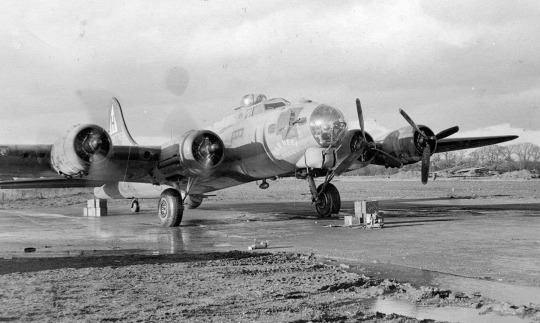
A B-17G of the 306th Bomb Group, fitted with a chin turret, from a photograph dated November 1943. The original caption read: “The new chin turret — so-called because it is fitted under the ‘chin’ of the aircraft — is the latest addition to the armor of the Flying Fortress.” United States Army Air Forces

A gunner sights his machine gun through the Plexiglass hood that was introduced over the radio compartment in the upper fuselage, amidships on the B-17, in a photo dated September 1944. Photo by PhotoQuest/Getty Images
The top turret and ball turret were electro-hydraulically powered and could bring the guns to bear on a target rapidly, traversing at some 50 degrees per second and electrically fed with ammunition. The tail turret was manually operated while the remaining trainable guns were on pivoted mounts, meaning the gunners had a limited field of fire and had to wrestle with the slipstream as they tried to get the enemy in their sights. Those sights were initially of the primitive ring-and-bead type, later superseded by reflector sights, making deflection shooting more reliable.
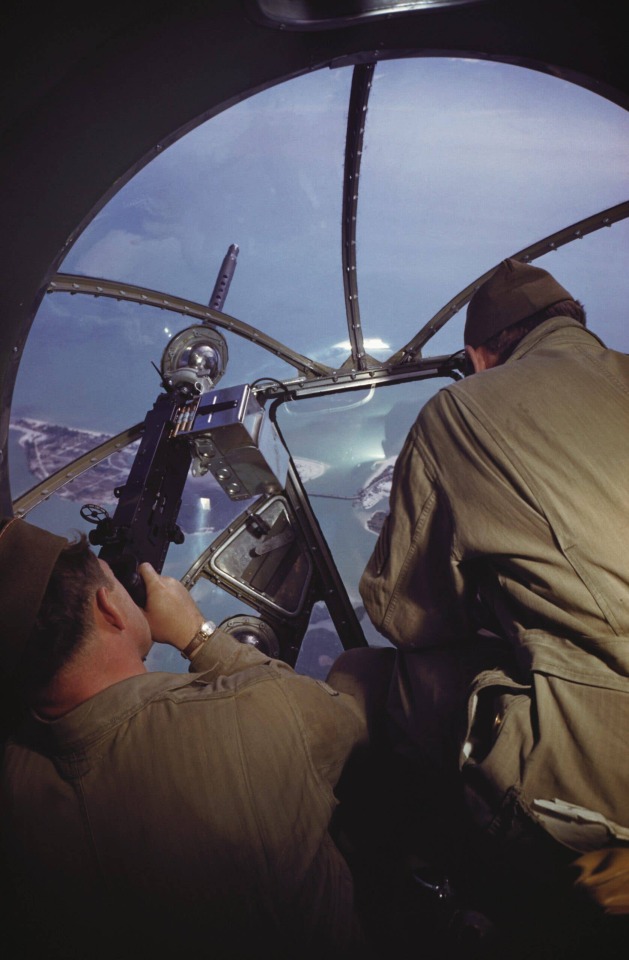
Bomber crew in the nose of a B-17 in the run-up to World War II. The limited traverse available on the gun mounted in the nose transparency is evident. Photo by Ivan Dmitri/Michael Ochs Archives/Getty Images
Despite the impressive concentration of firepower, an individual bomber remained highly exposed, especially during its run-in to the target, when it needed to fly straight and level.
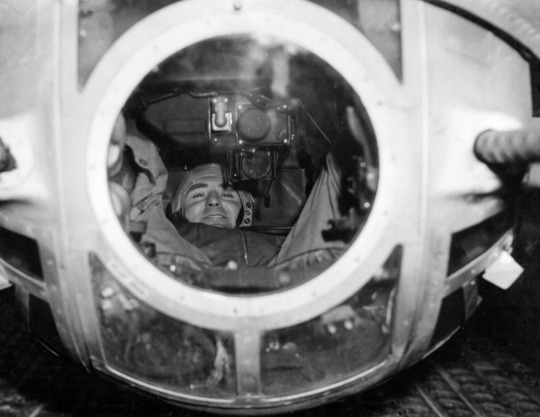
A gunner sitting at his action station in a B-17 ball turret, September 1944. Photo by Mondadori via Getty Images
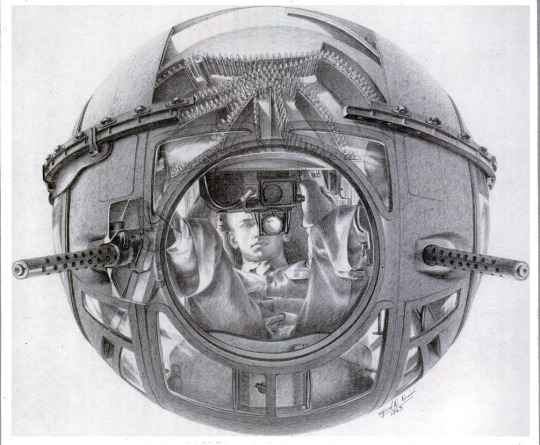
A wartime illustration of a Sperry Ball Turret, of the kind that armed versions of both the B-17 and B-24. The foetal position of the gunner and the ammunition feed mechanism are seen to good effect. Alfred D. Crimi, illustration for United States Army
The combat box was therefore soon developed to provide mutual protection, with interlocking arcs of fire provided by bombers flying in formation and staggered at different levels. This presented Luftwaffe fighters with a bigger problem and helped ensure that bombs were delivered close to the chosen target. This latter point was especially important bearing in mind the high altitudes from which these raids were typically flown. However, these tactics also required the bombers to stay in rigid formation if it was to be successful — counterintuitive when coming under attack from fighters or anti-aircraft fire from the ground.
Ultimately, as formations grew in size, the combat box was refined to become the ‘wing box,’ comprising three staggered 18-plane boxes for a total of 54 bombers. This was especially challenging for crews, with closely packed bombers running into each other’s turbulence and with a risk of bombs from a higher stack hitting aircraft flying below. When it worked, however, the wing box provided roughly 700 defensive machine guns that could be brought to bear on fighter opposition.
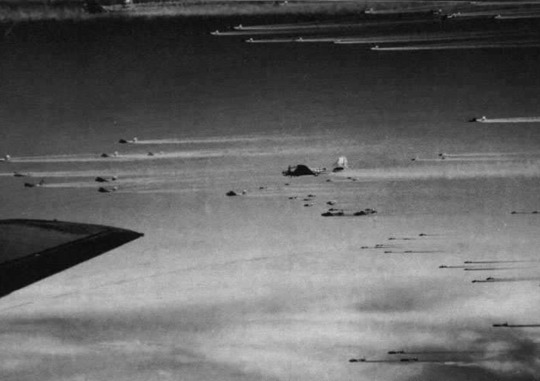
The view into a multi-ship B-17 bomber stream during World War II. These examples are purportedly from the 493rd Bomb Group, 3rd Bomb Division. U.S. Air Force photo
As well as falling bombs, there remained the risk of fratricide of another kind, too. While bombers’ gun turrets were designed to fire on arcs that ensured the aircraft’s tail, for example, would not be shot off, the same was not the case for other bombers flying nearby.
Other changes to the combat box tactics followed, including looser formations of 27 or 36 aircraft once flak superseded fighters as the primary threat to the bombers. The need for more spacing was driven by the fact that the detonation of a single anti-aircraft shell from a flak gun could potentially knock out more than one bomber. Once radar-guided Pathfinder groups became available, this also allowed bombers to operate with greater separation between them and still hit their target reasonably accurately, even in poor weather.

A B-17 crew of the 306th Bomb Group stand underneath the flak-damaged wing of their B-17, nicknamed Holy Hellcat, in 1943. United States Army Air Forces
Whatever the tactics, the process of getting bombers into compact formation was also far from easy. Considerable training was required beforehand and, for the missions themselves, assembling the bombers in their boxes needed a lot of time and energy on the part of the crews and consumed precious fuel. Some accounts suggested it took roughly an hour to get into formation at the start of a mission. Flamboyantly painted ‘assembly ships’ were among the initiatives developed to make the process easier.
At the same time, the Luftwaffe was adapting its tactics to deal with larger and better-armed USAAF bomber formations. In particular, German fighter pilots made high-speed ‘slashing’ attacks.

A model of a B-17E/F with latticework showing the directions of fire from its defensive machine guns, for the aid of a Luftwaffe Fw 190 fighter pilot, circa 1943–44. German Federal Archives
Despite the lack of fighter opposition at the start of the USAAF bombing campaign, it was far from easy for the Luftwaffe to bring down a big B-17 or B-24 bomber.
One Luftwaffe report indicated that around 20 hits from 20mm cannon shells (far more destructive than the bombers’ own machine guns) were needed to destroy a USAAF heavy bomber in an attack from the rear. At the same time, the average Luftwaffe pilot would hit a bomber with only around two percent of the rounds they fired; that translated to a requirement of 1,000 20mm rounds to ensure a bomber’s destruction. A Luftwaffe Fw 190 fighter carried only 500 rounds.
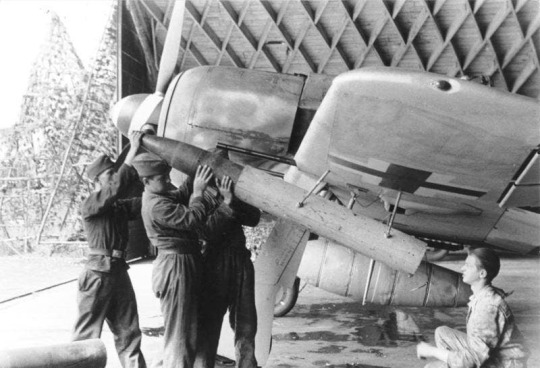
A Luftwaffe Fw 190 is loaded with 21-cm-Werfergranaten (WfG. 21) rockets, to be used to attack heavy bombers, in 1943. German Federal Archives
It’s notable, too, that as well as adding more defensive guns, the bombers also received more and improved armor, making the Luftwaffe’s task harder still.
Attacking a bomber head-on provided better odds for the Luftwaffe pilot, since the bomber’s forward-firing defensive armament was more limited, and its armor less effective. Destroying a bomber from head-on could be achieved with four or five 20mm hits, according to Luftwaffe studies. However, this was also addressed in the program to up-arm the USAAF ‘heavies,’ including the B-17’s chin turret.
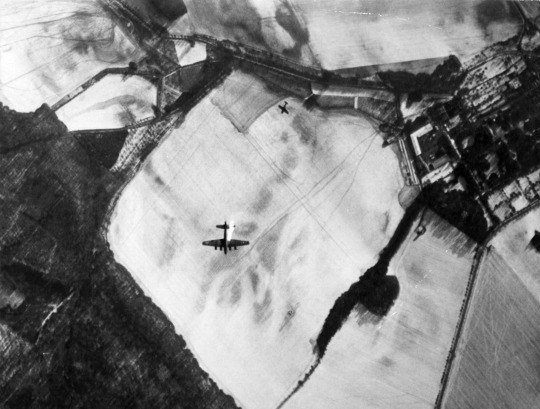
A Focke-Wulf Fw 190 shoots down a USAAF B-17G during an attack on the AGO Flugzeugwerke Aircraft factory at Oschersleben, Germany, January 11, 1944. U.S. Air Force photo
Once again, as the USAAF bombers added guns, the Luftwaffe in turn increased its firepower, adding more ammunition, cannons in ever-heavier calibers, and later even air-to-air rockets. These initiatives may have been driven primarily by the requirement for heavy-hitting weapons that would be more likely to destroy a heavy bomber in a single pass, but they also increasingly out-ranged the bombers’ defensive guns. Fortunately for the Eight Air Force, the 21-cm rocket, despite its large warhead, was less than reliable.
In action, the 21-cm-Werfergranaten (WfG. 21) rocket proved relatively ineffective. “It downed few bombers, but it often damaged planes sufficiently to force them out of formation so that other fighters could finish them off,” the aviation historian Alfred Price recalled.
In October 1943, an Eighth Air Force raid against the ball-bearing production center at Schweinfurt, in southern Germany, demonstrated to USAAF leadership that a different approach would be needed if the bombers were to survive.
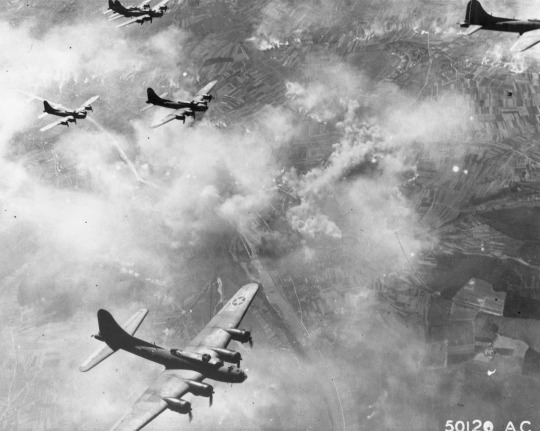
USAAF B-17Fs in formation over Schweinfurt, Germany, during an earlier raid on the ball-bearing production center on August 17, 1943. U.S. Air Force photo
By this stage, fighter escorts were available to the USAAF bombers, but, as the Schweinfurt raid of October 14, 1943, demonstrated these protective assets were too few in number and their range too short to ensure adequate protection.
The second Schweinfurt raid saw 291 B-17s sent against the target, of which 60 were lost outright, 17 damaged beyond repair, and another 121 damaged to one degree or another. A staggering 22 percent of the bomber crews involved — around 650 out of 2,900 men — were killed.
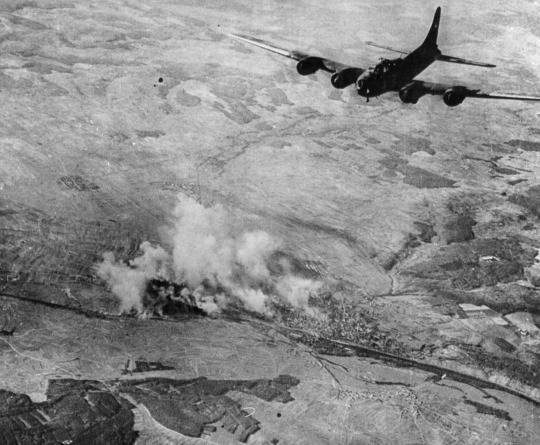
A B-17 of the Eighth Air Force heads back from the raid against Schweinfurt, Germany, on October 14, 1943, an operation that came to be known as known as ‘Black Thursday.’ U.S. Air Force photo
The USAAF responded by suspending unescorted daylight bomber raids deep into Germany until February 1944. When they recommenced, P-51B long-range escort fighters were available to provide the bombers with the close defensive protection they so badly needed. Flying ahead of the combat boxes, the P-51s would ultimately wrest control of the skies from the Luftwaffe’s fighter force. They would be aided in this by the tide of the war turning against Germany more generally, depriving it of the resources it needed to try and blunt the Allied bomber offensive.
Between February and June 1944, this combination of factors finally saw the B-17 emerge as a survivable asset. After the successful ‘Big Week’ raids of early 1944, Berlin was now in the USAAF’s sights. The first Eighth Air Force raid on the capital of the Third Reich came in March.
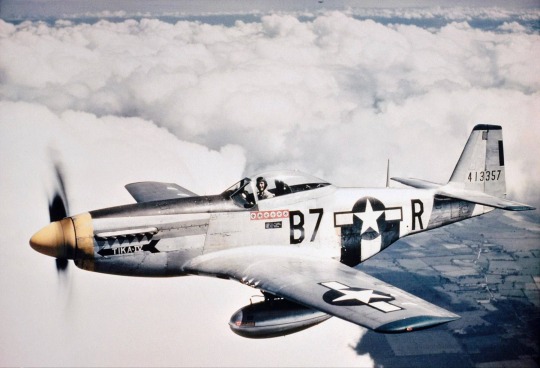
Tika IV, a P-51D flown by Lt. Vernon Richards, serving with the 374th Fighter Squadron, 361st Fighter Group. United States Army Air Force/361st FG Association, via Al Richards
The Luftwaffe’s response, from now on, was fairly tokenistic. The jet-powered Me 262, armed with heavy cannons and also rockets, was a formidable bomber-destroyer but fielded in numbers too small to be meaningful and its operations were hampered by shortages of pilots and fuel. The rocket-powered Me 163, on the other hand, offered blistering performance that allowed it to pass through bomber streams unscathed, but was arguably more lethal for its pilots than the Eighth Air Force.
Until the Eighth Air Force finally got the upper hand over Europe, survival had very much been down to the bravery and skill of the bomber crews themselves. While they were aided by the ability of the B-17, especially, to absorb a significant degree of battle damage, their machine gun armament was more than just a morale-booster.

“Hitler would like this man to go home and forget about the war. A good American non-com at the side machine gun of a huge B-17 bomber is a man who knows his business and works hard at it” — the original caption of a staged wartime propaganda photo showing a B-17 waist gunner. Collection Library of Congress, Transfer from U.S. Office of War Information, 1944
The bombers’ defensive armament and the tactics designed to best exploit it forced the Luftwaffe to change its approach. Gunners also achieved success, with the Eighth Air Force claiming 6,259 enemy aircraft destroyed by bomber gunners, more than for its fighter pilots. There is no doubt, however, that attributing fighter ‘kills’ was tricky in the heat of combat. Often, multiple gunners would open fire on the same target, observation of confirmed wreckage was far from guaranteed, and there was no gun-camera footage. Limited recognition of gunner aces reflected these realities, but at the same time, their enlisted status (for the most part), meant they were often also omitted from official lists of USAAF aces.

B-17s from the 398th Bombardment Group fly a bombing run to Neumunster, Germany, on April 13, 1945, less than one month before the German surrender on May 8. U.S. Air Force photo
Regardless, their job was a vital one and their mission among the most hazardous imaginable.
“When he was not shooting or being shot at, the gunner’s prime concern was survival,” Bruce D. Callander wrote in the April 1, 1991, issue of Air & Space Magazine.
“Missions lasted up to eight hours, with much of the flying taking place above 25,000 feet. Temperatures dropped as low as minus 60 degrees Fahrenheit in bombers that had no insulation and little heating outside the flight deck. Fleece-lined flight jackets were scant protection. The earliest electrically heated suits often shorted out and burned their occupants. Waist gunners worked through open windows, suffered frozen fingers, and slipped on the spent shells that piled up at their feet. Turret gunners had slightly more protection from the elements, but their cocoons allowed little room to move an aching arm or to stamp a cold foot.”
With hindsight, it’s clear that the availability of high-quality long-range escort fighters in sufficient numbers was the decisive factor in reducing Eighth Air Force bomber losses to a more acceptable level. But until those fighters were fielded, the bomber crews themselves more often than not provided their aircraft with the first and last line of defense.
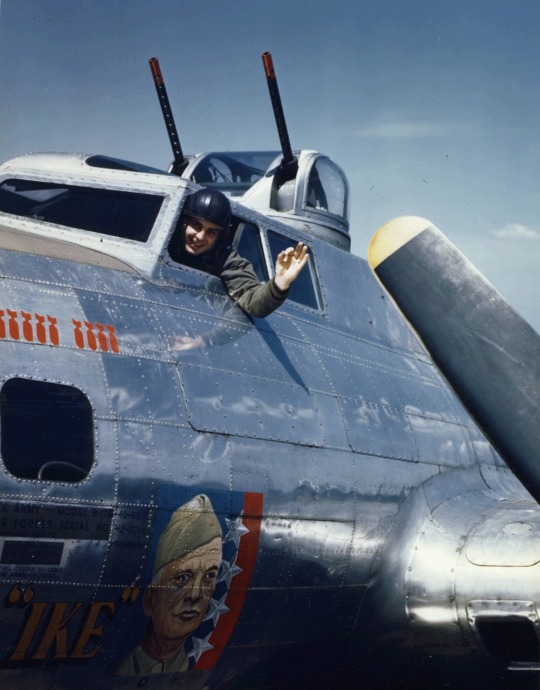
1st Lt. George H. Heilig waves and gives the okay sign from the cockpit of the General Ike, a B-17 from the 401st Bomb Squadron, 91st Bomb Group, Eighth Air Force, England, circa 1944. Photo by PhotoQuest/Getty Images
Interestingly, there was a school of thought in the United Kingdom, at least, that suggested that the Royal Air Force might have been better off removing defensive guns from its World War II bombers altogether.
The theoretical physicist and mathematician Freeman Dyson, in 1943, proposed removing at least some of the gun turrets from Lancaster bombers, to provide what he claimed would be a 50 m.p.h. increase in cruising speed. The unarmed Mosquito relied on its speed for protection from Luftwaffe fighters, but it was a far higher-performing aircraft in general and it seems highly unlikely that an unarmed Lancaster would have been much more survivable.
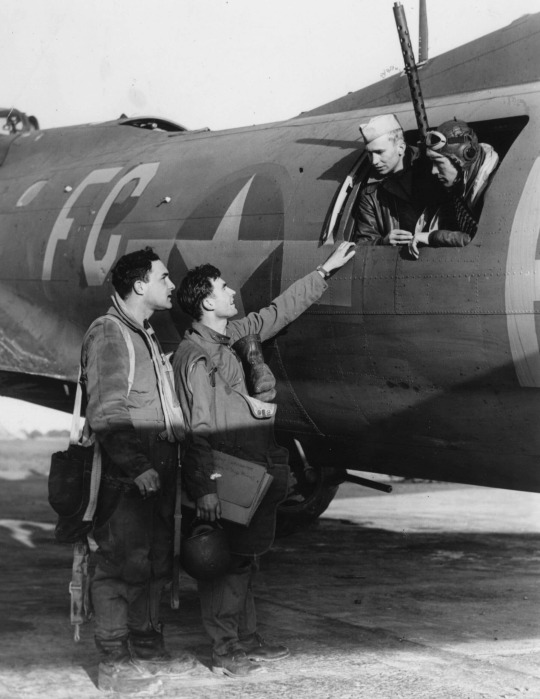
August 1943: United States Army Air Forces bomber crewmen with their B-17. Visible are the left-side waist machine gun, as well as the ball turret and the gun protruding from the radio compartment in the upper fuselage. Photo by Hulton Archive/Getty Images
This brings us again to the morale factor and the very important fact that USAAF and Royal Air Force heavy bomber crews were able to fight back with defensive armament, even if their guns were still at a disadvantage against the Luftwaffe in terms of destructive power.
While precise tallies of the Eighth Air Force gunners’ successes can never be determined, their legacy was continued in the postwar U.S. Air Force, which continued to arm its strategic bombers with guns, finally only in the tail, right up until the B-52H. The B-52H still serves today, albeit with its tailguns now deleted. Fittingly, the B-52 and the service’s other strategic bombers come under the command of the Eighth Air Force — the very same formation whose gunners fought so valiantly for the liberation of Europe back in World War II.
Contact the author: [email protected]
40 notes
·
View notes